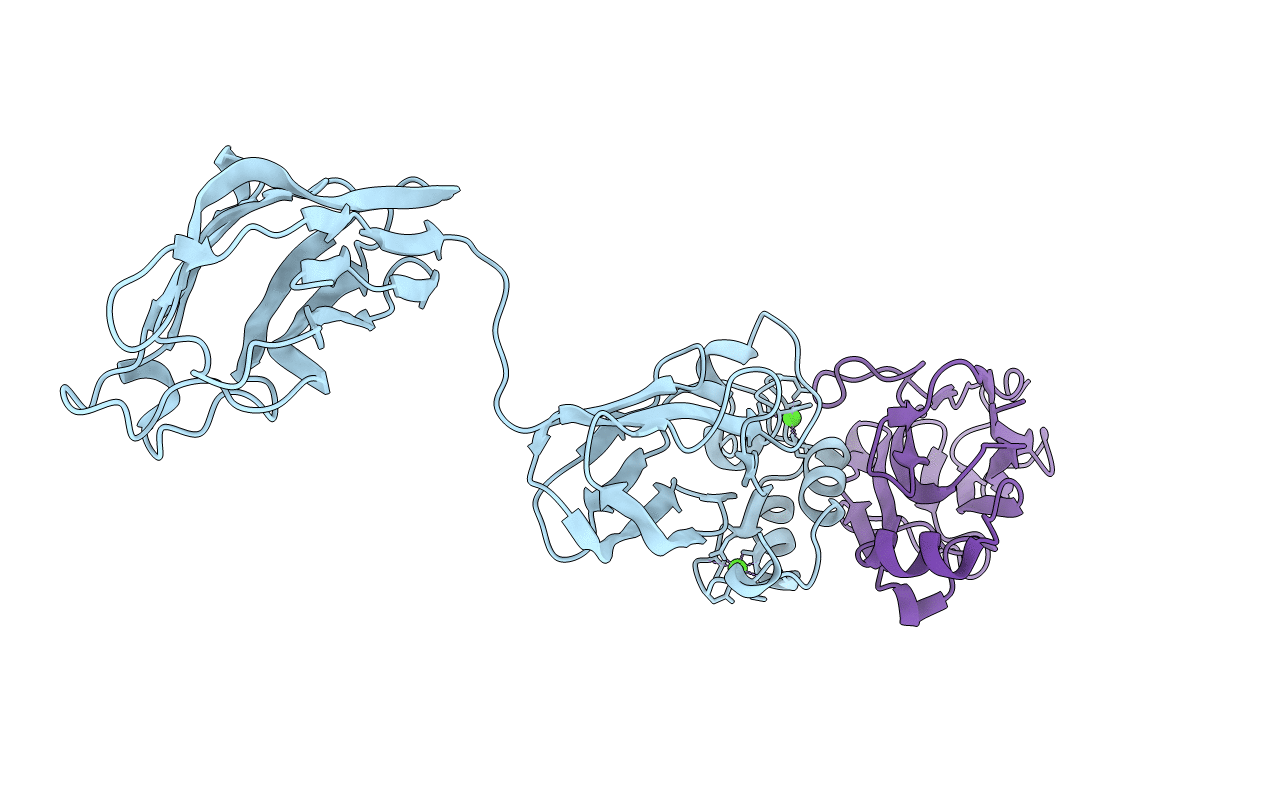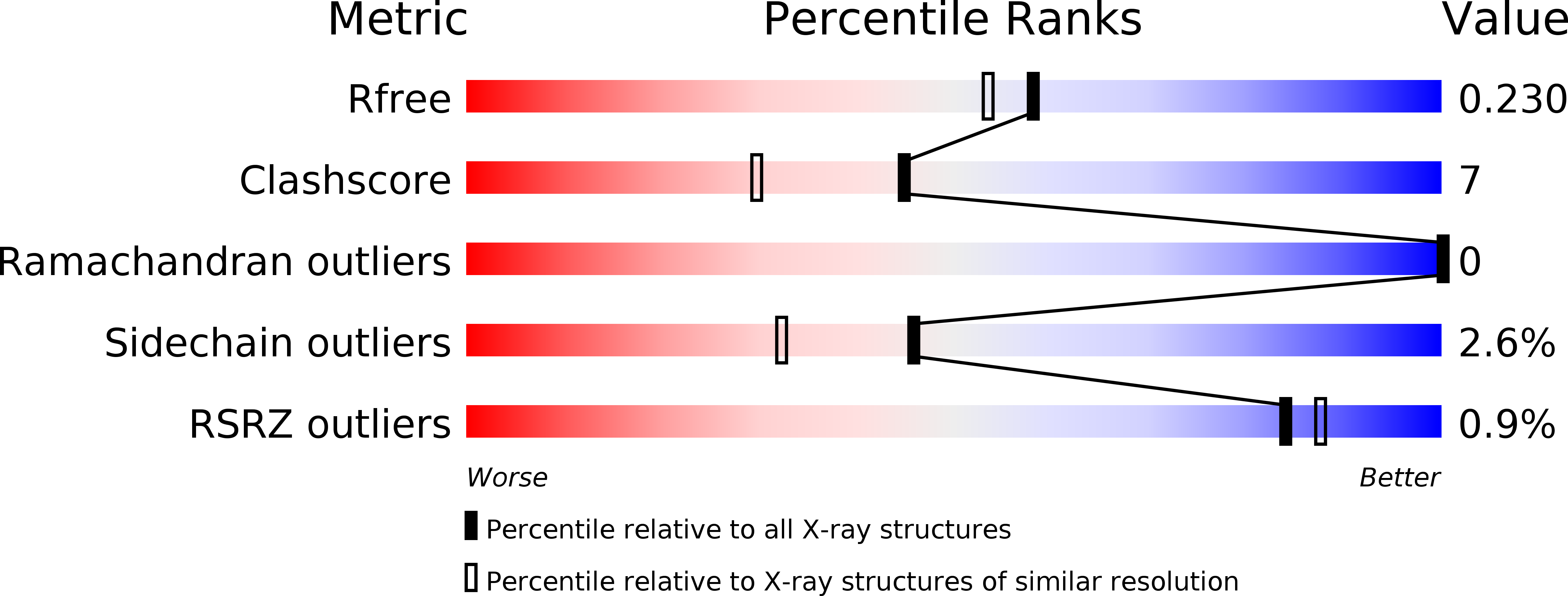
Deposition Date
2009-10-21
Release Date
2010-02-09
Last Version Date
2024-02-21
Entry Detail
PDB ID:
3KCP
Keywords:
Title:
Crystal structure of interacting Clostridium thermocellum multimodular components
Biological Source:
Source Organism:
Clostridium thermocellum ATCC 27405 (Taxon ID: 203119)
Host Organism:
Method Details:
Experimental Method:
Resolution:
1.94 Å
R-Value Free:
0.23
R-Value Work:
0.20
R-Value Observed:
0.20
Space Group:
P 21 21 2


